
JOBS POLICIES, ANALYSIS, AND RESOURCES
Latest Jobs Posts
The Week That Was: Global News in Review Week (Foreign Policy Brief #221)
Since early September, the United States has carried out at least 14 strikes against alleged drug smuggling boats in the Caribbean and Pacific. The US has now deployed fighter jets, warships and thousands of troops to the Caribbean. The military buildup in the region is the largest since 1994 when the United States sent two aircraft carriers and more than 20,000 troops into Haiti to take part in “Operation Uphold Democracy.”
Strategies To Win The Mid-Terms (Op Ed)
Democrats lost considerable power in the 2024 elections-relinquishing control over the House, the Senate, and the Presidency. In the upcoming 2026 mid-terms they have a chance to regain at least partial control of the levers of government — if they win majorities in the House and the Senate. Can they learn from their mistakes of the past? Can they take advantage of the poor performance of the Republicans since 2024? Can they actually win in 2026? A USRESIST NEWS Editorial team recently met to consider strategic options for the Dems to pursue in their upcoming mid-term campaign. Here’s what was suggested:
Trump’s War on Highest Ed: Shake-up or Shakedown? (Education Policy Brief #212)
From Harvard to Stanford, the message was unmistakable—comply or be cut off. The campaign, launched soon after Trump’s return to office in 2025, has transformed federal education funding into a weapon aimed squarely at the nation’s most prestigious campuses.
Funding Dissent in the Crosshairs: Trump’s War on the Soros Foundations (Elections & Politics Policy Brief #200)
The Trump administration has targeted George Soros and the Open Society Foundations (OSF) in its post-Kirk “crackdown” on what it calls radical left networks. Trump has floated the use of RICO charges, ordered agencies to scrutinize progressive donors and Non-Governmental Organizations (NGOs), and tied OSF to so-called organized political violence. OSF and other left-leaning groups have dismissed these moves as a politically motivated effort to silence dissent and restrict civil society.
Bulldozing History (Social Justice Policy Brief #182)
The entire historic East Wing of the White House was demolished in late October 2025 to clear space for President Trump’s controversial $300 million private ballroom project. The rapid, irreversible destruction—which eliminated the offices of the First Lady and her staff, the Social Secretary’s office, the family movie theater, and the primary public entrance—was carried out in a matter of days. This action directly contradicted the President’s prior assurance in July that the new 90,000 sq ft ballroom would be “near it but not touching it,” and would not interfere with the existing structure. The administration proceeded with the demolition without legally required approvals from the National Capital Planning Commission (NPC) or the Commission of Fine Arts, deliberately bypassing the public review process intended to protect the national landmark.
Pardoned for Profit (Social Justice Policy Brief #181)
The pardon of Changpeng Zhao (“CZ”), the convicted founder of the world’s largest cryptocurrency exchange, Binance, by President Trump, is widely viewed by critics as a clear act of “pay-to-play” corruption and a severe abuse of executive clemency.
A Primer on Commodity Metals (Economic Policy Brief #90)
Commodity metals are raw metals that are globally standardized and traded in bulk. They are typically categorized as industrial (base) metals (copper, aluminum, zinc), or precious metals (gold, silver, platinum). Precious metals are valued for investment and jewelry, while base metals are essential for industrial use and manufacturing. This Brief seeks to explain the ways in which fluctuations in demand influence the pricing and availability of commodity metals. In addition to commodity metals, rare earth minerals play an important role in various technologies but are not globally standardized. We will discuss these in an upcoming brief.
Silence as Strategy: U.S. Denial of Genocide in Gaza (Foreign Policy Brief #220)
In September 2025, a United Nations Commission of Inquiry concluded what many on the ground have known for months: Israel is committing genocide in Gaza. The commission cited deliberate acts—mass civilian killings, destruction of vital infrastructure, deprivation of basic needs, and explicit incitement from Israeli officials—that collectively meet the threshold under the 1948 Genocide Convention.
California’s Landmark AI Regulations Don’t Go Far Enough (Technology Policy Brief #158)
California styles itself as a leader in AI regulation. Two landmark bills were signed by Governor Newsom this year over the usual industry objections. But the bills don’t go as far as safety advocates wanted, and don’t offer sufficient protections to young, vulnerable users.


Strategies To Win The Mid-Terms (Op Ed)
USRESIST NEWS OP ED | November 2025
Democrats lost considerable power in the 2024 elections-relinquishing control over the House, the Senate, and the Presidency. In the upcoming 2026 mid-terms they have a chance to regain at least partial control of the levers of government — if they win majorities in the House and the Senate. Can they learn from their mistakes of the past? Can they take advantage of the poor performance of the Republicans since 2024? Can they actually win in 2026? A USRESIST NEWS Editorial team recently met to consider strategic options for the Dems to pursue in their upcoming mid-term campaign. Here’s what was suggested:
- Make sure you have a populist** message to motivate working class and younger audiences: It’s a message that needs to focus on making things affordable again like groceries, health care and housing; a message targeted to working class people of all races living in both rural as well as urban areas. Wherever possible messages should be hyper-local, focused on the issues relevant to the local electorate.
- Promote your message loudly and clearly through as many channels as possible: Rely as much on social media platforms as legacy media; make sure you are messaging constantly through every kind of media available; make use of influencers; where appropriate candidates should appear on TV, including righty-wing stations such as FOX News.
- Run new candidates, especially younger ones, who are authentic and represent the audiences they are targeting: There is a general consensus that we need a new generation of leaders, less encumbered by big money donors and middle of the road platforms; who are not afraid to support and fight for new policies.
- Steer away from the middle of the road and extreme left positions: In 2024 the Dems were hurt by their focus on identity politics. While identity issues are important they tend to ignore issues of basic human needs that cut across identities. They also make it easy for Republicans to overexaggerate the role of identities in Democratic platforms.
In addition to identity politics many Democrats ran on conservative middle-of-the-road policies focused on tinkering with budgets and amending existing programs. They were hesitant to be bolder and more innovative, thus turning off voters who were looking for something other than politics-as-usual. The Democrat reliance on corporate donors often makes it hard for them to support more class conscious candidates.
- Call out Republican mistakes: Trump and the Republicans have not done a great job in governing til now. They have ignored their commitment to the middle class, and have focused instead on racist and xenophobic policies such as indiscriminate arrest of immigrants and sending armed troops into US cities. They also can be blamed for the government shutdown, escalating costs of health care, and giving tax breaks to the wealthy. But Dems need to be careful not to run entirely negative anti-Republican campaigns. They need to emphasize positive actions they will help working families,
- Make sure the voting system is not rigged: Dems need to take steps to challenge and offset any moves that Republicans make to gerrymander voting districts. The successful effort made in California on a ballot initiative that supports additional Democrat leaning districts should be copied in other states. Also Republican initiatives against early voting and mail-in ballots must be strongly opposed. It is to the advantage of Democrats to have as many people vote as possible. The Dems also need to have an army of attorneys, poll watchers, and lawyers to monitor and call out Republican voting system shenanigans. And of course the Dems need to draw down on their well oiled get-out-the-vote machines in as many states as possible,
** Here the term “populist message” refers to a message aimed at addressing the quality of life issues affecting many working and middle class Americans, and which are not being successfully addressed by the current administration.
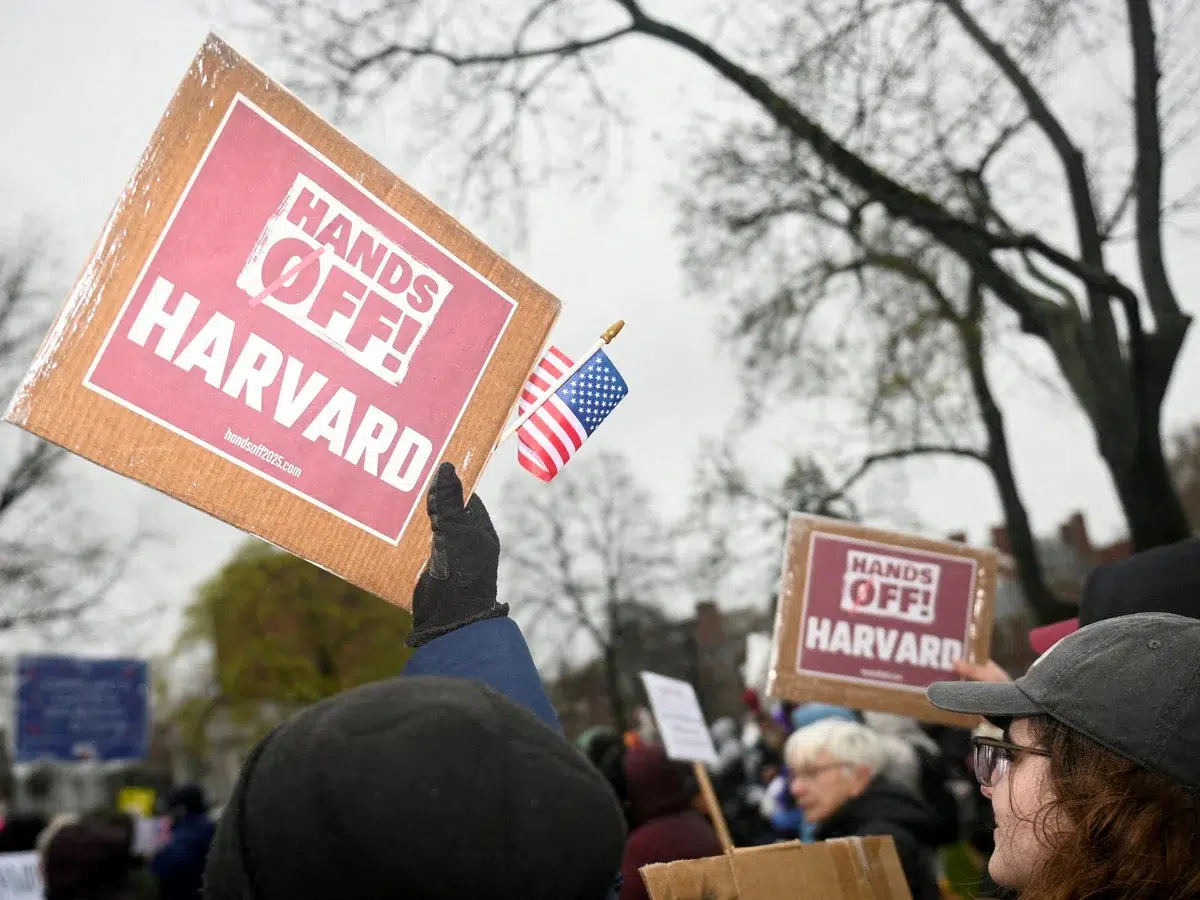
Trump’s War on Highest Ed: Shake-up or Shakedown? (Education Policy Brief #212)
Education Policy Brief #212 | Charlie Sweeney | November 5, 2025
If this were a Harvard–Yale football game, it would be a blowout.
Unlike the famed 1968 matchup—when a heavily underdog Harvard team tied Yale and The Harvard Crimson ran the cheeky-but-triumphant headline, “Harvard Beats Yale, 29–29,” this contest has been one-sided from the start.
In relentless fashion, with the nation’s premier universities in its sights, the Trump administration’s assault on academic freedom has been lopsided, swift, punishing, and unwavering—with no signs of letting up.
The scorecard tells the story: Columbia University capitulated and paid more than $220 million in damages; Northwestern’s president resigned under pressure after nearly $790 million in federal funds were frozen; and the University of Virginia’s president stepped down amid an administrative purge of diversity programs.
From Harvard to Stanford, the message was unmistakable—comply or be cut off. The campaign, launched soon after Trump’s return to office in 2025, has transformed federal education funding into a weapon aimed squarely at the nation’s most prestigious campuses.
While showing no signs of slowing, Trump‘s assault on the nation’s premier universities has not gone unnoticed by academia. Irene Mulvey, president of the American Association of University Professors, warned, “What we’re seeing is not policy correction—it’s political retribution dressed as reform.” She added, “The federal government is holding higher education hostage to ideology.”
In an interview with the Chronicle of Higher Education, Lee C. Bollinger, former Columbia president and first amendment scholar, said, “This is a dangerous inversion of academic freedom. Instead of protecting the independence of knowledge, the state is now dictating its boundaries.”
Signs of Trump’s upcoming “War on Higher Ed” were clear in his first administration, but nothing could’ve prepared academics for the assault that was to come after his inauguration this passed January.
Beginning in 2025, the Trump administration escalated it’s long-standing feud by accusing major universities of political bias, intellectual intolerance, and moral decay. Officials claimed that elite schools had become “woke factories,” indoctrinating students instead of educating them.
The administration charged that universities protected antisemitic speech while silencing conservative viewpoints, prioritized diversity and inclusion over merit, and wasted taxpayer dollars on gender, race, and global-studies programs that “undermined American values.”
Federal officials also turned their attention overseas, questioning research partnerships with China and other foreign entities. The White House framed these collaborations as potential national-security risks and argued that universities were “selling out American innovation.” The rhetoric marked a new frontier in federal oversight—an effort to reassert Washington’s authority over what universities teach, fund, and research.
But this was no mere war of words: the administration quickly followed its rhetoric with punitive action.
In early 2025, the Department of Education froze $400 million in funding to Columbia University, citing its “failure to protect Jewish students” during campus protests following the Israel–Hamas conflict.
Harvard was next: the administration withheld roughly $2.2 billion in research and education grants after the university refused to dissolve DEI offices and modify admissions policies.
By spring, the White House introduced the “Compact for Academic Excellence in Higher Education,” offering restored or expanded funding to schools that agreed to a suite of federal conditions—among them tuition caps, limits on foreign students, and an “alignment with American and Western values” across curricula.
Analysts estimated that the administration had frozen or threatened between $3.3 billion and $3.7 billion in grants affecting more than 600 institutions nationwide. These measures represented a radical reimagining of federal education policy: research grants, once distributed on merit and peer review, became bargaining chips in a broader ideological campaign.
Universities have met this assault with a mix of compliance, defiance, and crisis management. Columbia University chose capitulation—paying more than $220 million, adopting the IHRA definition of antisemitism, and rewriting its protest and disciplinary codes to regain access to federal funds.
Harvard University, by contrast, sued the administration, arguing that the funding freeze violated the First Amendment and represented unconstitutional retaliation against perceived ideological opposition.
Elsewhere, leadership turnover signaled turmoil. Northwestern’s Michael Schill resigned amid frozen grants; at the University of Virginia, James E. Ryan was ousted following accusations of “pervasive DEI bias.”
Other institutions, including Brown University and MIT, outright rejected the administration’s compact, asserting that the terms would “compromise academic independence.”
Yet even some defiant campuses quietly restructured diversity offices, modified speech codes, or altered admissions practices in anticipation of further scrutiny—gestures that blended resistance with survival.
As 2026 approaches, the clash between academia and Washington shows no signs of easing. The Trump administration appears intent on using federal dollars to realign higher education with its political agenda, while universities brace for sustained financial and ideological pressure.
Courts may ultimately determine how far an administration can go in conditioning public funding on ideological conformity—but by then, the cultural terrain of American higher education may already be transformed.
If the administration’s campaign succeeds, the result could be a compliance-driven academic landscape—less independent, more politically policed, and divided between institutions that capitulate for funding and those that resist at great cost.
If universities prevail, however, this era may be remembered not as the downfall of academic freedom, but as its hard-won reaffirmation in the face of unprecedented federal coercion.
Engagement Resources
- The Guardian – Columbia University Settlement (July 2025)The Guardian – Columbia University Settlement (July 2025)
- Reuters – Northwestern President Resigns After Funding FreezeReuters – Northwestern President Resigns After Funding Freeze
- Chronicle of Higher Education – Interview with Lee C. BollingerChronicle of Higher Education – Interview with Lee C. Bollinger
- Time – Overview of Trump Administration’s Higher Education PoliciesTime – Overview of Trump Administration’s Higher Education Policies
- American Association of University Professors – Statement by Irene MulveyAmerican Association of University Professors – Statement by Irene Mulvey

Funding Dissent in the Crosshairs: Trump’s War on the Soros Foundations (Elections & Politics Policy Brief #200)
Elections & Politics Policy Brief #200 | Morgan Davidson | 11/3/2025
Summary
The Trump administration has targeted George Soros and the Open Society Foundations (OSF) in its post-Kirk “crackdown” on what it calls radical left networks. Trump has floated the use of RICO charges, ordered agencies to scrutinize progressive donors and Non-Governmental Organizations (NGOs), and tied OSF to so-called organized political violence. OSF and other left-leaning groups have dismissed these moves as a politically motivated effort to silence dissent and restrict civil society.
In the weeks following the assassination of Charlie Kirk, the White House’s rhetoric hardened.
- Aug 27, 2025 – Trump publicly called for George and Alex Soros to face RICO charges, offering no evidence, an apparent act of political revenge after Fulton County DA Fani Willis pressed similar charges against Trump for his 2020 election actions in Georgia.
- Sept 22, 2025 – Trump signed an order designating Antifa as a domestic terrorist organization, framing it as a first step in a wider crackdown on leftist “support networks.”
- Sept 25, 2025 – The administration broadened its push against what it calls “organized political violence.” The Attorney General refused to confirm or deny investigations into OSF, stating only that “everything is on the table.” OSF responded by calling the move a politically motivated attack, and Reuters later confirmed the DOJ had provided no evidence connecting the foundation to extremist activity.
- Sept–Oct 2025 – Senior Trump allies, including J.D. Vance and Stephen Miller, explicitly named OSF as a target to be “dismantled.”
- Oct 9, 2025 – A Reuters deep dive revealed a multi-agency plan led by Miller to investigate liberal nonprofits and donors linked to OSF’s funding network.
These developments mark one of the administration’s most ambitious and symbolic efforts yet to tie democratic support to domestic terror.
Analysis
The Open Society Foundations have long been a fixture in global democracy and human rights work. Founded by George Soros, OSF operates through a network of regional foundations that support justice, education, civil rights, and government transparency. With an estimated $25 billion in assets and $1.2 billion in expenditures in 2024, the foundation funds thousands of projects worldwide, from court reform to media independence. Alex Soros now chairs the board, and Binaifer Nowrojee serves as president, continuing the network’s mission under a new generation of leadership.
What distinguishes OSF from many of the other groups targeted by the Trump administration, such as Antifa or grassroots protest movements, is its institutional scale and legitimacy. OSF’s work happens not in the streets but through grants, partnerships, and advocacy. Yet, this formality makes it visible and traceable, giving the administration a more tangible target than diffuse movements like Antifa.
On Sept 25, OSF released a statement calling the rumored investigations “politically motivated attacks designed to silence dissent.” Progressive NGOs, including the ACLU, echoed this concern, warning that the administration’s tactics threatened First Amendment protections and risked chilling the broader ecosystem of nonprofit advocacy.
Legal experts also note that U.S. law provides no mechanism to designate a domestic group as a terrorist organization. Trump’s earlier Antifa order, used as a model, lacks binding legal force, making any similar action against OSF largely symbolic and constitutionally fraught. Even so, the administration could still pressure OSF through informal levers such as IRS audits, financial scrutiny, subpoenas, or expansive RICO charges to achieve the same silencing effect.
At its core, the crackdown appears to be as much about political retribution as policy. Trump’s call for RICO charges against Soros and his son came after the same statute was used against him. The administration’s rhetoric, paired with its investigations into liberal donor networks, reveals a multi-front strategy, attacking grassroots activists (Antifa), legal advocates (ACLU), and financiers (OSF) to suppress opposition at all levels.
This attack extends beyond philanthropy: it connects to the President’s repeated attacks on the press as “fake news” and his administration’s influence in media mergers and acquisitions, including cases like Paramount. Taken together, these efforts outline a vision of political control in which speech, funding, and reporting are viewed as threats if they challenge the state.
As the administration moves forward, the feasibility of any legal case against OSF remains doubtful. But the symbolism, painting the largest liberal foundation in the world as an enemy of the state, carries lasting consequences. It signals to other donors that supporting democratic institutions and rights groups may invite federal scrutiny. If the administration is able to take down or significantly crack down on the OSF then who can stand? It reframes philanthropy as terror, and it deepens America’s already dangerous divide between power and opposition, turning democratic infrastructure into another front in the political wars.
Engagement Resources
- Reuters: Evaluating Trump’s plan to crackdown on “radical left” https://www.reuters.com/legal/government/trumps-war-left-inside-plan-investigate-liberal-groups-2025-10-09/?utm_source=chatgpt.com
- Open Society Foundations: Who We Are – Overview of OSF’s mission, grants, and leadership. https://www.opensocietyfoundations.org/who-we-are
- Ebsco: Who is George Soros? A research starter- https://www.ebsco.com/research-starters/biography/george-soros
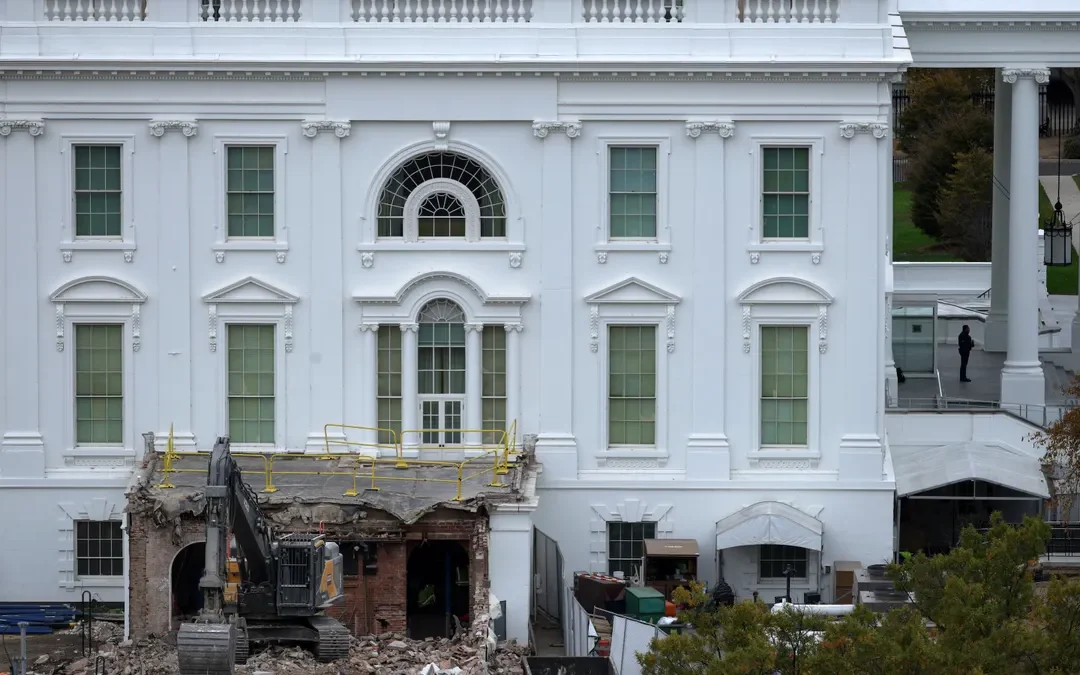
Bulldozing History (Social Justice Policy Brief #182)
Social Justice Policy Brief #182 | Valerie Henderson | October 29, 2025
Summary
The entire historic East Wing of the White House was demolished in late October 2025 to clear space for President Trump’s controversial $300 million private ballroom project. The rapid, irreversible destruction—which eliminated the offices of the First Lady and her staff, the Social Secretary’s office, the family movie theater, and the primary public entrance—was carried out in a matter of days. This action directly contradicted the President’s prior assurance in July that the new 90,000 sq ft ballroom would be “near it but not touching it,” and would not interfere with the existing structure. The administration proceeded with the demolition without legally required approvals from the National Capital Planning Commission (NPC) or the Commission of Fine Arts, deliberately bypassing the public review process intended to protect the national landmark.
Analysis
The demolition of the East Wing represents a strategic breach of both historic preservation laws and public trust, transforming the project from a controversial renovation into an act of cultural vandalism shielded by political expediency.
Deception and Irreversible Damage
The administration’s messaging involved a clear pattern of deception. The President initially promised the East Wing would remain intact, only for his staff to later claim the complete demolition was suddenly necessary for a “strong and stable” and “modernized” structure. This retrospective justification was used to excuse the unannounced destruction, highlighting a deliberate strategy to achieve an irreversible outcome before critics could organize a meaningful legal response. Critics and watchdog groups immediately labeled the President’s assurances a “Full Flop” and a flagrant abuse of power.
Bypassing Accountability
The most alarming aspect is the administration’s successful effort to circumvent the established oversight process. By arguing that demolition (unlike vertical construction) does not require NPC review, the administration effectively decoupled destruction from accountability. This was done even as the National Trust for Historic Preservation warned that the plans were legally required to undergo public review and that the new, massive ballroom (nearly twice the size of the main White House) would visually “overwhelm” the Executive Mansion itself. Trump further cemented his control over the process by firing the six members of the Commission of Fine Arts shortly after the demolition began
Privatization of a National Landmark
The project’s $300 million cost is being covered by private donors a list that includes major defense contractors and technology companies (e.g., Amazon, Lockheed Martin). The destruction of a historic public institution, the “People’s House,” to build a gilded, Mar-a-Lago-style private entertaining space, funded by corporate interests seeking influence, raises severe ethical and corruption concerns. It symbolizes the replacement of public stewardship with private-sector vanity, effectively treating a national monument as a private commercial property.
My Opinion
The demolition of the White House East Wing is an unforgivable act of political and cultural vandalism. It is not modernization; it is a physical metaphor for this administration’s contempt for the rule of law and the sanctity of public institutions.
This entire episode is a grotesque display of autocratic ego. The East Wing—the domain of First Ladies, the social heart, and the public’s doorway—was destroyed not for security or necessity, but because the sitting President found the existing ceremonial space insufficient for his personal brand. The deceit—promising not to touch the structure, then tearing it down in secret under the guise of an “emergency” build—is a clear breach of public trust.
By allowing private wealth to literally bulldoze and reshape the “People’s House” for his own grand designs, President Trump has effectively completed the privatization of the American presidency. The physical destruction of this landmark is a lasting injury to American history, accountability, and democracy.
Engagement Resources
- National Trust for Historic Preservation – Leading national voice on protecting America’s historic places; sent a formal letter to the administration demanding a pause on the demolition.
- National Capital Planning Commission (NCPC) – The federal agency legally responsible for reviewing construction projects in the National Capital Region.
- Citizens for Responsibility and Ethics in Washington (CREW) – Monitors ethics violations, private funding of public projects, and potential conflicts of interest in the Trump administration.
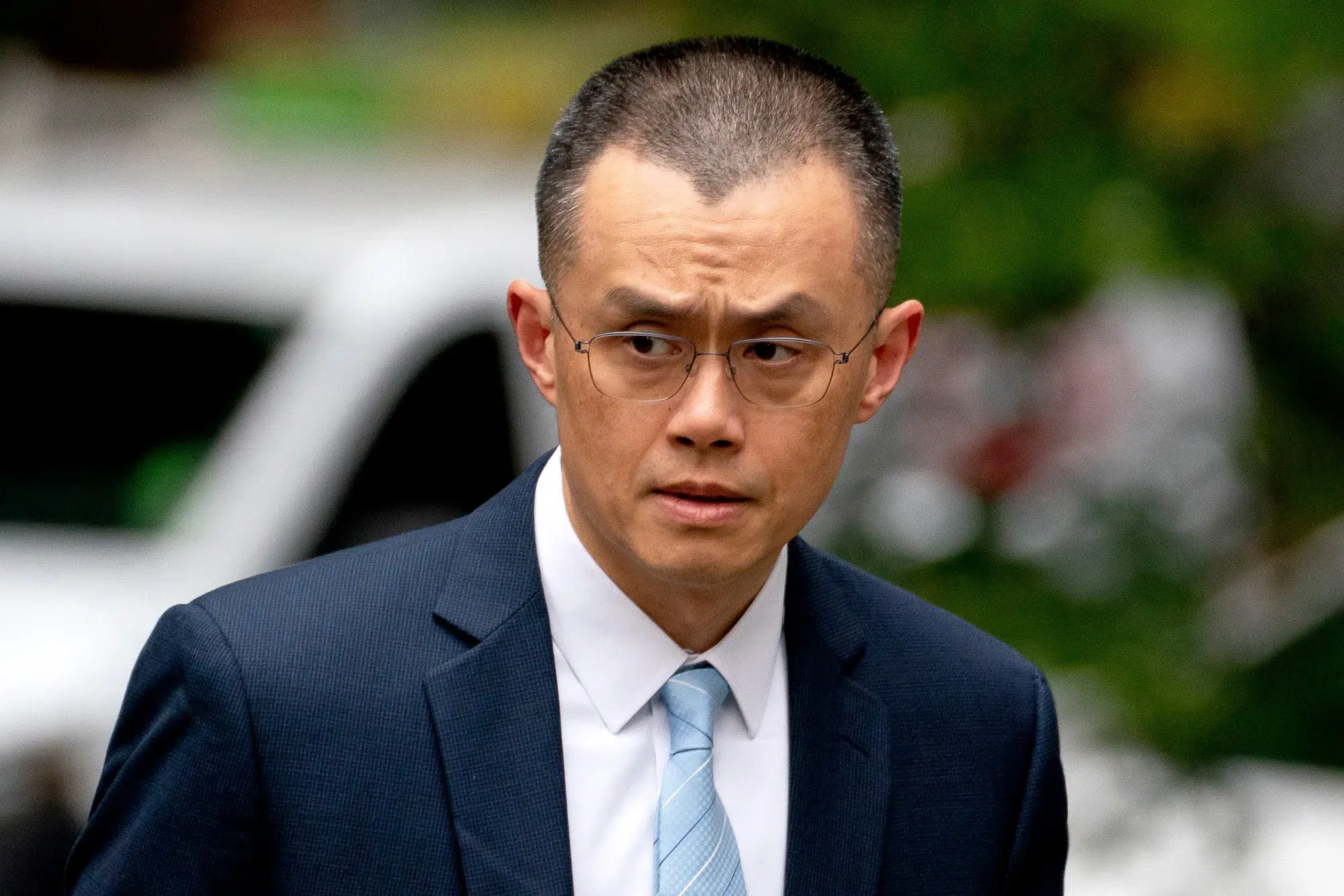
Pardoned for Profit (Social Justice Policy Brief #181)
Social Justice Policy Brief #181 | Valerie Henderson | October 29, 2025
Summary
The pardon of Changpeng Zhao (“CZ”), the convicted founder of the world’s largest cryptocurrency exchange, Binance, by President Trump, is widely viewed by critics as a clear act of “pay-to-play” corruption and a severe abuse of executive clemency.
The controversy stems from the direct financial and lobbying links between CZ, his company, and the President’s family business, World Liberty Financial. CZ had pleaded guilty to a felony charge of failing to maintain an effective anti-money-laundering (AML) program, a failure that facilitated billions in illicit transactions for terrorist groups and child abusers. Despite this, the President granted a full pardon shortly after Binance and its associates provided financial and structural support to the Trump family’s new crypto venture, which yielded the President over $57 million in the last year.
Analysis
The executive pardon of Changpeng Zhao represents a critical nexus where executive authority intersects with private financial gain, drawing severe condemnation for its transactional nature and the damage it inflicts upon the rule of law. The highly scrutinized relationship with the Trump family’s venture, World Liberty Financial, provides the ethical framework for this criticism. Zhao’s conviction was not for a minor infraction, but for a federal felony—willfully violating the Bank Secrecy Act—which prosecutors established enabled over $900 million in criminal activity, including money laundering for groups like Hamas, al-Qaeda, and organizations peddling child sex abuse material. Yet, instead of upholding the verdict, the President utilized the constitutional pardon power to effectively erase this crime, a decision immediately following the public emergence of a lucrative financial entanglement.
The connection is threefold and explicit: First, the President’s financial disclosure showed he earned more than $57 million from World Liberty Financial. Second, Binance provided technical support (creating the smart contract) and financial legitimacy to World Liberty’s USD1 stablecoin. Third, this support culminated in a $2 billion investment into Binance that utilized the World Liberty stablecoin, creating a direct economic bond between the President’s family and the convicted executive’s company. The fact that Zhao hired a lobbyist known as a close associate of Donald Trump Jr. to seek “assistance from the administration” only cemented the narrative of a “pay-to-play” scheme, where clemency was a political payoff for business support.
Furthermore, this act aligns perfectly with the strategic patterns of political power and manipulation criticized in USRESIST NEWS foreign policy briefs. The pardon is a form of “narrative erasure”, where the administration denies the atrocity of financial crime by rebranding CZ as a victim of the previous administration’s “war on cryptocurrency”. This move “whitewashes the crime” of enabling money laundering, replacing the need for legal accountability with the “illusion of economic salvation” for the crypto industry and the President’s own financial empire. It converts a legal crisis into a “business plan,” asserting that power absolves itself and that the highest office can be used as a “tool of ego” to reward loyal, wealthy allies. This action sets a dangerous precedent, signaling global impunity for financial crime when it is politically or personally advantageous to the executive branch.
My Opinion
The pardon of Changpeng Zhao represents a profound moral affront to the principles of justice and public service.
This is not an act of mercy; it is a brazen privatization of executive power. The President is shown to have used a solemn constitutional authority—the power to forgive federal crimes as an instrument for personal financial gain and commercial advancement for his family’s enterprise.
In this context, silence on the clear connection between the pardon and profit is not prudence it is complicity. This action signals to the world that if one can provide sufficient financial support to the power structure, one can escape accountability for even the most severe financial crimes. It is the logical and disastrous extension of a worldview that transforms justice into a business plan, and where political access is sold to the highest bidder.
Engagement Resources
- Senate Committee on Banking, Housing, and Urban Affairs (Minority Staff): Provides official legislative and oversight efforts, including pressuring the Department of Justice and Treasury on the pardon’s impact on enforcement.
- Americans for Financial Reform (AFR): A non-profit coalition that advocates for financial accountability and has issued strong statements against the pardon as rewarding “crypto crime”.
- US: A non-partisan government watchdog that monitors and exposes corruption and conflicts of interest within the executive branch.
- Brennan Center for Justice: Provides in-depth analysis and reports on the erosion of oversight, abuses of executive authority, and potential self-dealing in government.
- Transparency International: A global civil society organization that fights corruption, specifically focusing on the integrity and corruption risks associated with executive clemency powers.
Keywords
Pardon Corruption, Changpeng Zhao (CZ) Clemency, Binance Anti-Money Laundering (AML) Failure, World Liberty Financial Conflict of Interest,

A Primer on Commodity Metals (Economic Policy Brief #90)
Economic Policy Brief #90 | William Campbell | October 2025
Commodity metals are raw metals that are globally standardized and traded in bulk. They are typically categorized as industrial (base) metals (copper, aluminum, zinc), or precious metals (gold, silver, platinum). Precious metals are valued for investment and jewelry, while base metals are essential for industrial use and manufacturing. This Brief seeks to explain the ways in which fluctuations in demand influence the pricing and availability of commodity metals. In addition to commodity metals, rare earth minerals play an important role in various technologies but are not globally standardized. We will discuss these in an upcoming brief.
It is anticipated that the demand for most commodity metals will soon increase due to the growth of AI and renewable energy. Commodity metal demand forecasts need to be examined to understand the near and long-term effects of market shifts and their policy implications. For commodity-producing countries, if demand is to fall short of expectations, it would mean revenue shortfalls, which require austerity measures. Policymakers rely on frameworks that allow countercyclical responses to market dynamics, but if they are not aware of how to alleviate price volatility, they cannot combat inflation or encourage economic growth. To mitigate supply-demand imbalances, policymakers need some insight into commodity futures.
Demand for industrial metals is affected by indicators of economic growth, such as technological advancement and infrastructure development. Preparation for an upturn in demand has caused many industrial metals to be in oversupply. Aluminum is necessary for solar and wind power, energy storage, and for the bodies of electric vehicles (EVs). Cobalt is a necessary component for building lithium-ion batteries for EVs and energy storage. Copper is the most cost-effective and efficient industrial metal for conducting heat and electricity. Without it, data centers would be much less viable, and the transmission of electricity necessary for solar and wind power would be dampened. Iron ore is a necessary input to produce steel, which is used to create infrastructure for most green energy sources. Lithium is the key component of rechargeable lithium-ion batteries, which are used to power electric cars and clean energy devices. Nickel is important for high density energy storage and strengthening materials used in clean energy technologies. Zinc is used to galvanize steel, strengthening infrastructure used for solar and wind power collection.
TABLE 1: The Relationship Between Supply and Demand for Industrial Metals
Aluminum→Market Deficit→40% demand increase by 2030
Cobalt→Oversupply→Market deficit by 2030→Demand increase
Copper→Market Deficit→24% demand increase by 2035
Iron Ore→Oversupply→Demand increase, but only for high-quality ores
Lithium→Oversupply→Inelastic producers outpace demand→Market deficit by 2030
Nickel→Oversupply→Market rebalancing will create a market deficit in the 2030s
Zinc→Oversupply→Slow demand increases starting in the 2040s
Precious metals other than gold have more volatile demand. Silver, platinum, and palladium exist in smaller markets with higher expenditures per purchase. Gold is comparatively more stable due to its larger market and universal recognition. It is capable of conductivity needed for quick and efficient transmission of data while being malleable enough to coat circuit board components. Gold is seen as a safe investment during economic uncertainty, in turn facing price slumps as investors sell for profit. The market for gold is too large to accurately predict changes in specific industries.
Palladium is used in advanced memory storage, so its usage in AI technology could increase its sensitive market value. Palladium’s growth over the next two decades is due to hydrogen synthesis, which makes analysis difficult. Platinum is useful for creating sensors to maintain conditions for AI operations, such as gauging temperature spikes. Silver demand is projected to increase in the 2030s due to its necessity for solar energy collection. Its high conductivity and unmatched optical reflectivity make it unparalleled.
TABLE 2: The Relationship Between Supply and Demand for Precious Commodity Metals
Gold→Market Deficit→40% demand increase by 2030
Palladium→Oversupply→Market deficit by 2030→Demand increase with unsure impact
Platinum→Market Deficit→24% demand increase by 2035
Silver→Market Deficit→170% demand increase by 2030
Engagement Resources
- Council on Foreign Relations | David Hart | The World Will Miss U.S. Investment in Energy RD&D
- Everstream Analytics | Commodity Outlook: Supply Chain for Metals
- Reuters | David Russel | Critical minerals are stuck between demand hopes and oversupply reality
- S&P Global | Katya Bouckley | Nickel Market Could Stay in Oversupply until 2030
- World Bank | Commodity Markets
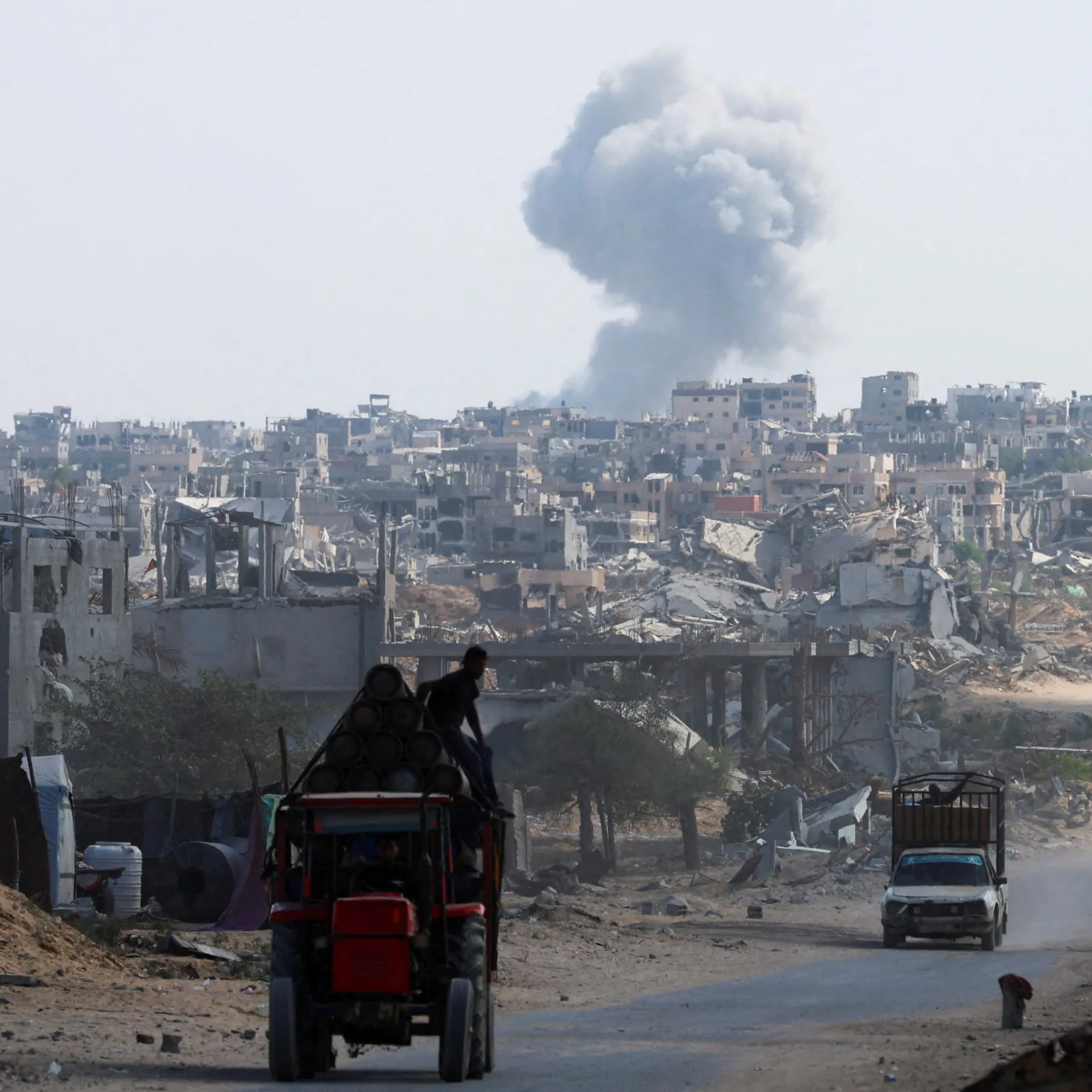
Silence as Strategy: U.S. Denial of Genocide in Gaza (Foreign Policy Brief #220)
Foreign Policy Brief #220 | Valerie Henderson | October 16, 2025
Summary
In September 2025, a United Nations Commission of Inquiry concluded what many on the ground have known for months: Israel is committing genocide in Gaza. The commission cited deliberate acts—mass civilian killings, destruction of vital infrastructure, deprivation of basic needs, and explicit incitement from Israeli officials—that collectively meet the threshold under the 1948 Genocide Convention.
And yet, in the United States, the word “genocide” remains politically taboo. Lawmakers dodge it, journalists dilute it, and diplomats avoid it altogether. This isn’t semantic caution—it’s calculated silence. By refusing to name genocide, U.S. officials shield allies from accountability, sidestep treaty obligations, and normalize a global hierarchy in which some human lives are deemed less grievable than others.
Analysis
The U.N. commission’s report was clear: Israeli authorities have committed acts consistent with genocide, including killing members of a protected group, inflicting conditions designed to destroy life, and preventing births among Palestinians. The findings recommended that all member states review military and economic cooperation with Israel and suspend arms transfers immediately.
Despite that clarity, Washington’s response was predictably evasive. President Trump and senior administration officials characterized the findings as “one‑sided,” insisting the situation was “complex” and that Israel had the right to defend itself. These talking points echo years of U.S. foreign policy continuity: affirm Israel’s actions, minimize Palestinian death, and defer accountability indefinitely.
But denying genocide is not a neutral act—it is participation. The Genocide Convention, to which the U.S. is a signatory, obligates states not only to punish but also to prevent genocide. Pretending not to see it allows the killing to continue under diplomatic cover. Silence becomes a strategy, not a lapse.
Meanwhile, Trump’s so‑called “takeover plan” for Gaza only deepens the moral rot. His February 2025 proposal to “redevelop” Gaza under U.S. supervision and transform it into the “Riviera of the Middle East” reads like a colonial blueprint, not a peace proposal. The plan includes relocating populations, restructuring governance, and inviting American investors to “rebuild” on flattened Palestinian neighborhoods.
Such proposals convert genocide into an opportunity—where mass death becomes the pretext for real estate speculation, economic control, and narrative cleansing. It is the “displacement economy”: an old imperial tactic dressed in new neoliberal language.
This pattern—silence on atrocity, appropriation of reconstruction, rewriting of agency—reveals how global power sustains itself. Gaza’s suffering is filtered through press releases, branded as progress, and sold as stability. Trump’s rhetoric is not merely tone‑deaf; it’s a strategic repackaging of colonial dispossession for a modern audience.
The Price of Silence
Failing to name genocide has consequences far beyond Gaza. It signals to aggressors everywhere that impunity is possible if you have the right allies. It erodes the credibility of international law and diminishes the power of global institutions meant to protect civilians. It tells survivors that their suffering will be footnoted, not honored.
For Palestinians, this denial compounds trauma. Generations have witnessed occupation, blockade, and bombardment—but 2025 has introduced annihilation on an industrial scale. When the U.S. refuses to say “genocide,” it denies victims even the dignity of acknowledgment.
The Weaponization of Language
The refusal to use the term “genocide” also reflects a deeper problem: the manipulation of language as political armor. Calling it “war” implies mutuality. Calling it “conflict” implies parity. Both distort the reality of asymmetrical power—an occupying army versus an imprisoned civilian population.
This linguistic sleight of hand allows U.S. leaders to maintain the façade of diplomacy while backing policies that perpetuate death. The insistence on neutrality is itself a form of violence. Neutrality in the face of massacre is not balance—it is endorsement.
My Opinion
To deny genocide is not prudence—it is complicity. The United States, under Trump, has chosen to mute its conscience in service of geopolitical loyalty and domestic politics. His refusal to name or condemn atrocity is not ignorance; it is intentional. It aligns perfectly with a worldview where power absolves itself, where victims must prove their humanity before earning recognition.
Trump’s vision of Gaza—as property to be “redeveloped,” as chaos to be “controlled,” as history to be “rebranded”—is the logical extension of this silence. It transforms a genocide into a business plan. It commodifies pain and cloaks it in patriotic rhetoric.
We cannot allow that erasure. Every civilian buried under rubble, every hospital stripped of power, every family displaced from land is a record of what silence produces. To speak plainly—to say genocide—is to reclaim moral language from political cowardice.
Naming matters. It is the first step toward justice, accountability, and repair. Until the United States abandons its strategic silence, it remains not an observer of atrocity, but its enabler.
Engagement Resources
- Human Rights Watch – Monitoring and documenting human rights violations, especially in Gaza.
- International Federation for Human Rights (FIDH) – Global coalition of human rights NGOs, often engaged in legal advocacy.
- Genocide Watch – Monitors and warns against escalating genocidal risk, offers alerts and policy guidance.

California’s Landmark AI Regulations Don’t Go Far Enough (Technology Policy Brief #158)
Technology Policy Brief #158 | Mindy Spatt | October 29, 2025
Summary
California styles itself as a leader in AI regulation. Two landmark bills were signed by Governor Newsom this year over the usual industry objections. But the bills don’t go as far as safety advocates wanted, and don’t offer sufficient protections to young, vulnerable users.
Analysis
Reporting on AI Risks- Senate Bill 53
A landmark bill with first-in-the-nation AI standards, Senate Bill 53 imposes new reporting requirements on large AI models (models trained on enormous and diverse datasets that include trillions of data points) and extends whistleblower protections. It targets catastrophic risks, which the bill defines as “a foreseeable and material risk “that an AI model could:
- Contribute to the death or serious injury of 50 or more people or cause at least $1 billion in damages;
- Provide expert assistance in creating or releasing a chemical, biological, radiological, or nuclear weapon;
- Engage in criminal conduct or a cyberattack without meaningful human intervention; or
- Evade the control of its developer or user.
A predecessor bill, SB 1047, would have applied to a wider range of AI systems, but Governor Newsom failed to sign it. Critics have complained that SB 53’s focus specifically on large AI models is much too limited. And SB 53’s exemption for smaller companies and start-ups is a blatant give-away to an industry Newsom sees as key to California’s prosperity.
Senate Bill 1074 was more focused on prevention than compliance. It would have required AI models to meet safety certification standards before they went live. Senate Bill 53 doesn’t have similar provisions; it only requires reporting on the models after they are put into use. Independent third-party audits were also dropped in the new version of the bill.
“California has proven that we can establish regulations to protect our communities while also ensuring that the growing AI industry continues to thrive,” Governor Newsom bragged in his signing statement. But other proposed bills, like New York’s RAISE Act, set higher liability standards; harm must be a “probable consequence” of the model that could not have been “reasonably prevented.” The New York State Legislature has approved the Responsible AI Safety and Education Act, and it is awaiting Governor Hochul’s signature. It applies more broadly to “large developers” that spend over $100 million in training costs and requires companies not to use AI models that present …” unreasonable risks of critical harm” until the risks are mitigated.
Deadly Chatbots- Senate Bill 243
Senate Bill 824 is one of the first attempts in the nation to regulate chatbots, but child safety advocates say it doesn’t go far enough.. Under SB 243, companies that offer chatbots, such as OpenAI’s ChatGPT, would be required to add safeguards that would monitor conversations for signs of suicidal ideation and take steps to prevent self-harm, such as referrals to mental health services. ChatGPT is currently being sued for wrongful death in a case where a teen boy’s relationship with a chatbot allegedly drove him to suicide.
Makers of the chatbots will be required to add reminders to users of the artificial nature of the chats, and kids using the bots will also get reminders to take breaks. Companies would have to take steps to prevent children from being exposed to sexually explicit content through Chatbots. Meta, Facebook’s parent company, faced outrage from parents after a leaked copy of its chatbot rules revealed that the company’s bots were allowed to have “sensual” conversations with children.
Child safety advocates from Tech Oversight and Common Sense Media had supported a stronger bill, AB 1064, that would have prevented children from using “companion” chatbots unless companies met specific safety thresholds. Common Sense Media, whose CEO is Jim Steyer, a brother of billionaire climate activist Tom Steyer, and former Biden administration U.S. Surgeon General Vivek Murthy recently announced they will file a ballot initiative in California to rein in the use of artificial intelligence chatbots by young people and hold big tech companies accountable for any harms their products cause.
Called “The California Kids AI Safety Act,” the initiative would establish guardrails for companion chatbots, ban cellphones in classrooms, prohibit the sale of children’s data, require regular independent safety audits, and provide for education in AI literacy and safety.
In announcing the move, Steyer and Murthy specifically pointed to the multiple teenagers who died by suicide after using chatbots. The family of one of those teenagers, Adam Raine, had directly urged Newsom to sign the stronger chatbot bill he vetoed. Raine’s death was also referenced in a Statement by Commissioner Melissa Holyoak in announcing a Federal Trade Commission investigation into Chatbots, linked below.
ENGAGEMENT RESOURCES
- Statement of Commissioner Melissa Holyoak Regarding Issuance of Section 6(b) Orders to Companies That Offer Generative AI Companion Products or Services, September 11, 2025, https://www.ftc.gov/legal-library/browse/cases-proceedings/public-statements/statement-commissioner-melissa-holyoak-regarding-issuance-section-6b-orders-companies-offer
- Accountable Tech Commends New York State Senate on Passage of RAISE Act, Urges Gov. Hochul to Sign, https://accountabletech.org/statements/accountable-tech-commends-new-york-state-senate-on-passage-of-raise-act-urges-gov-hochul-to-sign/
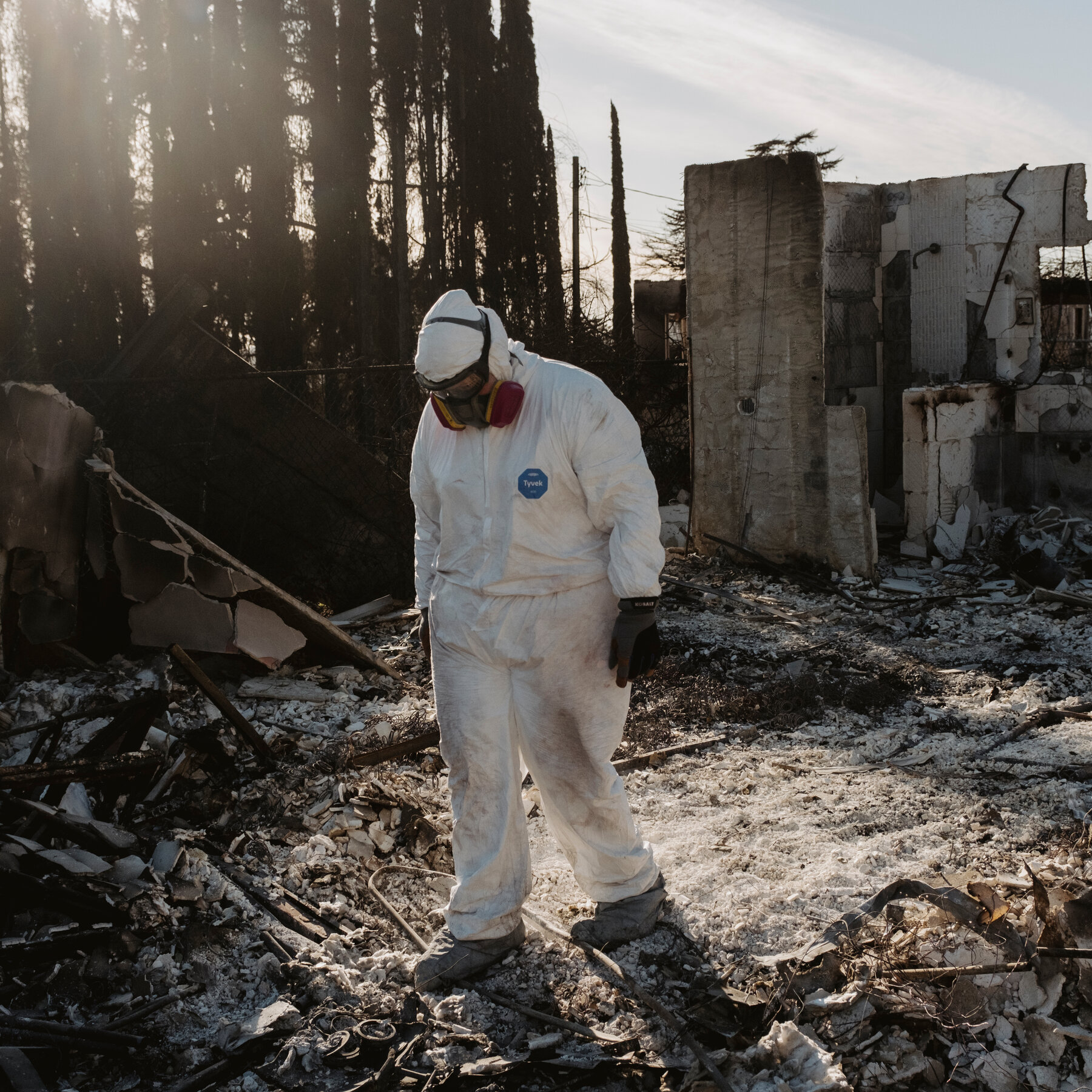
Trump’s Staff Reductions Leave FEMA Less Prepared: When the Helpers Don’t Show Up (Social Justice Policy Brief #180)
Social Justice Policy Brief #180 | Charles Sweeney | October 31, 2025
The Disaster Gap
We’ve all seen the images on our screens — homes splintered, power gone, dazed residents wandering through shattered neighborhoods. They’re desperate for water, cell service, and food. Some are still searching for missing loved ones.
In those first chaotic hours after disaster strikes, one question echoes through every devastated community: Where is FEMA? This spring, in parts of Kentucky and Missouri, that question went unanswered for days. Local officials expected the familiar convoy of federal trucks, inspectors, and field officers — but the help never came.
In St. Louis, Missouri, Mayor Tishaura Jones publicly lamented that the Federal Emergency Management Agency “has not been on the ground” days after a deadly tornado. “We cannot shoulder this alone,” she told reporters, calling for faster federal support (The Daily Beast). Meanwhile, in Kentucky, frustration boiled over among state leaders.
Several Republican lawmakers accused FEMA of being unresponsive and disorganized. They said the agency “set up command centers far from the hardest-hit communities” and that many locals “refused to deal with FEMA any more because of how adversely they were treated” (News From the States). Even Governor Andy Beshear pleaded with President Trump to expedite a disaster declaration to speed recovery funds (Kentucky Lantern).
Fewer Workers, Slower Response
The slow response isn’t happening in a vacuum. Since January 2025, FEMA has lost more than 2,400 employees — nearly 10 percent of its workforce — through a mix of buyouts, retirements, and firings (Government Accountability Office). About 1,500 staffers left through voluntary buyouts or early-retirement programs.
In February, more than 200 probationary employees were abruptly dismissed during a government-wide “performance realignment,” many learning of their termination by email . Later that summer, another 23 IT specialists were fired after a cybersecurity breach. Four senior officials — including FEMA’s CFO — were also removed following an internal audit of hotel reimbursements (Associated Press).
The result has been predictable. FEMA’s Public Assistance grants, which fund infrastructure repairs, now take over 90 days on average to process — up from about two months in 2024. Individual Assistance awards, the direct cash help for survivors, have fallen roughly 14 percent year-over-year (Department of Homeland Security Inspector General).
Local emergency managers say they’re stretched too thin. “People who used to get site visits in 48 hours now wait a week or more,” one Louisiana parish director told The Advocate. “Some never see a FEMA badge at all.”
Modernization or Mismanagement?
FEMA leaders insist the agency is modernizing. New automation tools and digital case-management systems are supposed to “streamline assistance and speed recovery.” But internal reviews and watchdog reports show those tools aren’t ready to replace human expertise.
A veteran analyst told the Union of Concerned Scientists that morale has “cratered” since February’s mass firings — and warned that “you can’t automate compassion.” Governors and emergency directors across the South and Midwest are also sounding the alarm. The National Emergency Management Association warned in May 2025 that “the erosion of FEMA’s workforce undermines national resilience.”
Some states — including Florida and Texas — are creating their own “mini-FEMAs,” expanding local programs to fill federal gaps. But experts say those state efforts can’t replace FEMA’s national coordination role. As Mayor Jones put it after the St. Louis tornado: “We cannot shoulder this alone.”
Climate Warnings and What Comes Next
All of this comes at a moment when climate science points to more frequent and more severe disasters. The National Oceanic and Atmospheric Administration (NOAA) recorded a record 28 billion-dollar weather disasters in 2024. Projections show that number could climb further as global temperatures rise and atmospheric moisture fuels stronger storms, floods, and wildfires (NOAA Climate Report).
In short, the nation’s disaster curve is going up — just as FEMA’s staffing curve is going down. This widening gap threatens not only response times but also long-term recovery for low-income and rural communities that rely most heavily on federal assistance. Experts warn that this imbalance could leave the nation dangerously unprepared for back-to-back catastrophes.
Scientists have long cautioned that the U.S. is entering a “new normal” of overlapping crises — where one hurricane, wildfire, or heat wave hits before the last disaster is fully recovered. With the planet warming and extreme weather becoming routine, this may be the worst possible time for FEMA to be smaller, slower, and stretched thinner than ever.
Engagement Resources
- The Daily Beast: https://www.thedailybeast.com/st-louis-mayor-says-fema-still-hasnt-helped-with-tornado-recovery/
- News From the States: https://www.newsfromthestates.com/article/some-kentucky-republicans-echo-trumps-complaints-about-fema-after-latest-flood
- Kentucky Lantern: https://kentuckylantern.com/2025/05/21/as-tornado-disrupts-regions-tourism-economy-beshear-asks-trump-for-expedited-disaster-declaration/
- ABC News: https://abcnews.go.com/US/agencies-federal-workers-fired/story?id=118901289
- Associated Press: https://apnews.com/
- Government Accountability Office: https://www.gao.gov/
- Department of Homeland Security Inspector General: https://www.oig.dhs.gov/
- Union of Concerned Scientists: https://blog.ucsusa.org/shana-udvardy/trumps-6-worst-attacks-on-fema-in-the-first-100-days/
- National Emergency Management Association: https://www.nemaweb.org/
- NOAA Climate Report: https://www.noaa.gov/news

Europeans no longer feel safe because of Russia; A First Person Account (Foreign Policy Brief #218)
Foreign Policy Brief #218 | Yelena Korshunov | October 23, 2025
During my trip across Europe a week ago, I spoke with people from different countries — ordinary men and women I met along the way. I asked each of them whether they feel safe in their country today and whether they expect a war.
Their answers echoed the broader mood across the continent. Many Europeans no longer feel safe because of Russia’s growing threats. According to a recent YouGov survey conducted in seven EU countries, “the closer a country lies to Russia, the more likely its people are to view the Kremlin as one of Europe’s main threats.” Russian aggression was named as one of Europe’s greatest dangers by 62 percent of respondents in Denmark, 57 percent in Lithuania, and 51 percent in Poland. In Germany, 36 percent considered Russia a top threat, followed by 31 percent in France, 22 percent in Spain, and 20 percent in Italy. Interestingly, in addition to fears of Moscow’s aggression, 19 percent of Spaniards and 17 percent of Italians said they also feel unsafe because of Washington’s actions.
Vaida lives in Vilnius, the capital of Lithuania. She is a university professor. “There’s a lot of talk here about Russia preparing to attack us. We’re afraid that the Russians might suddenly invade Lithuania just as they invaded Ukraine,” Vaida says. “We’re digging anti-tank trenches along the border and getting ready to repel an attack. I’m very afraid that my sons and my husband will have to go to war to defend us from the Russians.”
Carl runs a small restaurant in Dresden, a beautiful city in Germany. “I’m disturbed by Trump’s attitude toward Europe and his strange friendship with Putin. There is a lot of talk that Trump was recruited by the KGB years ago and has been their long-term project. How else can you explain the way he dances to Putin’s tune, as if following his orders? Trump is trying to weaken NATO — and that’s exactly what Moscow needs to attack European countries.”
Gerhard held a senior position in a large trading company for many years. Now he’s retired, living in Austria. He believes that NATO is capable of stopping a Russian attack on European countries, but America’s stance toward the alliance plays into Putin’s hands. “How could you elect Trump as president?” he’s wondering, looking at me inquisitively. “Half the country considered him a worthy candidate,” I replied. “I apologize for my country — and for our president.”
Adam drives us from the airport to Prague, the capital of the Czech Republic — a former member of the socialist bloc. He says he was a child when, in 1968, Soviet tanks rolled into Prague, crushing in blood the attempt of liberalization of the totalitarian Soviet regime. Adam tells us about this in very broken English, but we understand him. We also know about the “Prague Spring” — the period of liberalization in Czechoslovakia from December 10, 1967, to August 21, 1968, associated with the election of Alexander Dubček as First Secretary of the Communist Party and his reforms aimed at expanding citizens’ rights and freedoms and decentralizing power.
On the plane to Prague, my husband and I wondered which language we should speak there so as not to irritate the locals. Given Trump’s attitude toward escalating Russian threats toward Europe — “it’s none of my business” — English didn’t seem like the best option. The older generation of Czechs learned Russian in school, but after Russian tanks on Prague streets in 1968, Russian is not a beloved language in the Czech Republic. As it turned out, however, speaking English was perfectly acceptable — at least in tourist areas.
Kristina works at the reception desk of a cozy hotel in Old Prague. She’s a student and works part-time there on weekends. “I don’t think about the possibility of war here. None of us talk about it. We just live our lives. I hang out with friends, but we don’t discuss politics. There are many Ukrainian refugees in Prague. A girl from Ukraine studies with me. We don’t talk about what’s happening there,” Kristina says.
I understand her. It’s hard to imagine that incredibly beautiful, vibrant, tourist-filled Prague could ever come under shelling. May it always stay that way — may the sky over the Czech Republic and the entire Europe remain peaceful. But Ukrainian cities — Kyiv, Odesa, and Lviv — were once just as full of tourists and bright lights before they, too, came under relentless Russian bombardment, destroying lives and leaving behind ruins and tragedy.
Engagement Resources
- The closer to Russia the greater the fear, opinion poll finds, https://www.politico.eu/article/russia-opinion-poll-closer-border-fear-yougov-eu-countries/
- What Europeans think of Trump’s approach to Ukraine (and what they might do next), https://www.atlanticcouncil.org/blogs/new-atlanticist/experts-react/what-europeans-think-of-trumps-approach-to-ukraine-and-what-they-might-do-next/
- Senior German General Says Europe Must Do All It Can to Help Ukraine, https://www.nytimes.com/2025/10/20/world/europe/ukraine-russia-war-europe.html
